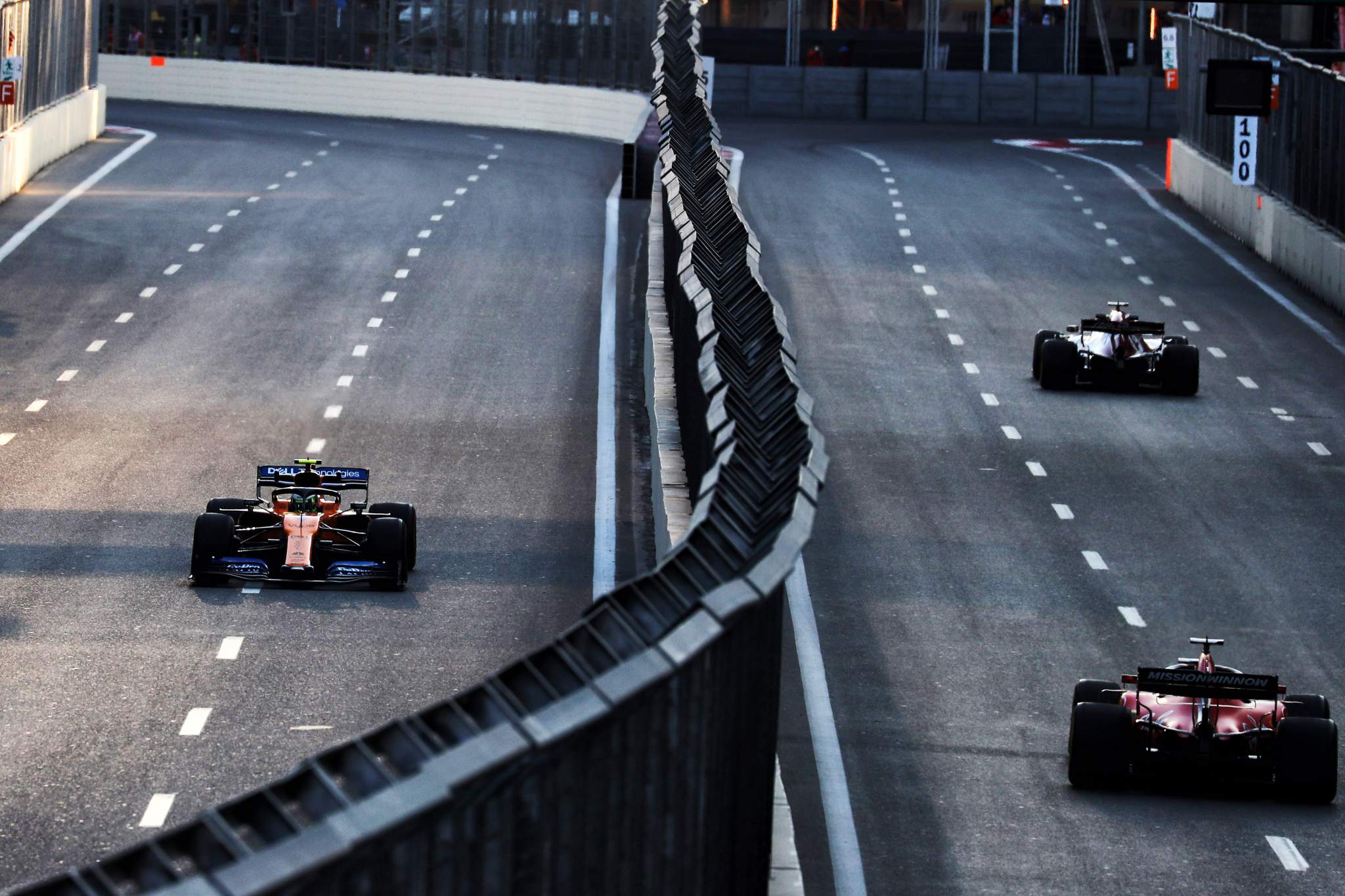Up Next

McLaren “strongly disagrees” with the delayed implementation of new tests to ensure Formula 1 teams are not illegally using flexi-wings and wants the FIA to show a “very strong hand”.
Deflection testing of wings and other bodywork is commonplace in F1 but it emerged after the Spanish Grand Prix that the governing body will implement stricter load and pullback tests from mid-June, and use onboard cameras to monitor excessive flexing.
The FIA has also warned teams that it reserves the right to perform any of its standard tests to 1.5 times the stated loads.
Video footage from Barcelona showed the rear wing of the Red Bull flexing considerably on the straights, drawing the attention of Mercedes and its world champion Lewis Hamilton, and the Alfa Romeo and Alpine cars have also been identified as doing the same.
While the FIA has not named any specific team, it has made all competitors aware it will increase its vigilance of anomalous rear wing behaviour, amid concerns that some are finding a way to make their wings pass the existing tests in place then deform under greater loads on-track.
That has triggered new, stricter tests but they will only be enforced from June’s French Grand Prix, meaning teams can theoretically continue to use their existing wings – so long as they continue to pass the original tests still in place – in this weekend’s race in Monaco and the next round in Azerbaijan.
“When you see all the videos and pictures from Barcelona, it’s pretty clear what is happening there,” McLaren team principal Andreas Seidl said on Thursday morning in Monaco.
“Therefore we welcome the action from the FIA with the technical directive, where we also are happy with the basic content.
“Where we strongly disagree is with the timing of the implementation.
“From our point of view there is no reason after not just one team, we’re talking about multiple teams, already have the advantage of doing things which from our point of view are clearly against the regulations.

“They’ve had the advantage already for several races, which we are obviously not happy with.
“But now allowing them to have further advantage for some more races is clearly something we strongly disagree with and where we are in conversation with the FIA.
“The FIA has to show a very strong hand on this now.
“Because in my point of view it’s simply not acceptable because teams that are complying with the regulations are at a disadvantage.”
As ex-F1 technical director and The Race’s technical expert Gary Anderson explained, the F1 technical regulations covering “bodywork flexibility” outlines a range of deflection tests but passing those tests are not enough to guarantee legality because the rules also state any part influencing aero performance “must be rigidly secured to the entirely sprung part of the car”.
That is governed by Article 3.8 of the rules under “aerodynamic influence”.
Seidl says that as the FIA’s load tests are not the only criteria for determining if parts are legal, the governing body has room to act faster.
He said there is already plenty of analysis, citing videos on YouTube, demonstrating that some wings are circumventing the rules.
The argument is that if the FIA has video evidence showing a rear wing, which has passed the load tests, deforming illegally on-track, it can take action rather than give the teams a month to strengthen their wings and pass the new tests while running their existing wings in the interim.
Flexi-wings are unlikely to have a significant impact in Monaco this weekend where top speeds are so low.

But in Baku, the final race where the existing tests will still be applicable, a team running a rear wing that bends back on the straights will have the benefit of less drag on one of F1’s longest flat-out sections of the season, while enjoying more downforce in the corners where the wing holds its normal shape at lower-speed.
“I can’t judge if the topic was around with FIA or with other teams already before Barcelona, but for us as a team that is not involved, we can only have limited information about what other cars are having on their cars, and you need evidence,” said Seidl.
“And from our point of view, the only evidence or the first time we saw visual evidence was the pictures or the videos that have been available in Barcelona.”
Seidl downplayed the prospect of McLaren protesting a rival team and reiterated it was still in discussion with the FIA “to understand what they will put in place in order to make sure that teams that have designed devices or parts that allow things that we have seen in Barcelona, simply can’t use these devices or parts anymore from now onwards”.
“Then we take it from there,” he added.




